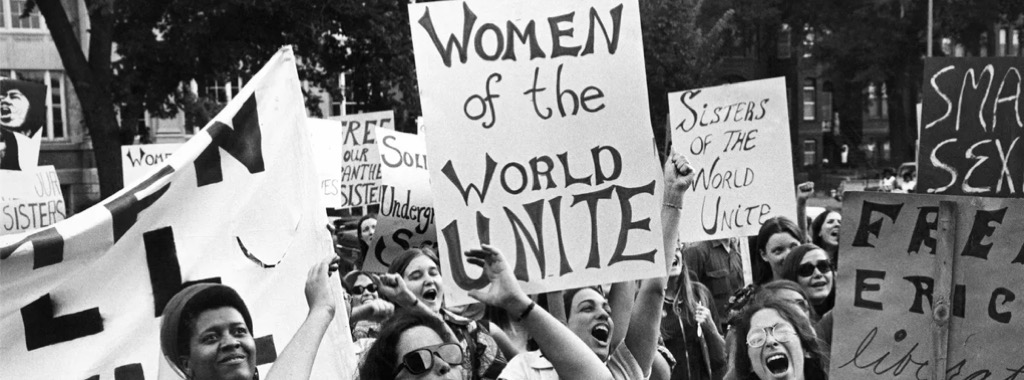14+ Are We In The Third Or Fourth Wave Of Feminism Ideas
Are we in the third or fourth wave of feminism. The suffragette movements of the turn of the century the reproductive and work rights movements of the 1960s. In a more general sense third-wave feminism has been critiqued for its focus on individual emancipation in contrast to the personal is political debates of the second wave. In fact many feminist activists had been talking about the so-called fourth wave of feminism for several years. The third-waves large focus on neoliberalism and postfeminism is something that recurs within parts of the fourth-wave. While by many definitions were into the fourth wave of feminism the theres still lots of emphasis on intersectional feminism. Some people myself included have used third-wave as a catch-all term for all feminist activity since the early 1990s while others divide the period into the third and fourth wave based on the degree to which the internet was the central medium of communication and dissemination of feminist thought. While third wave feminists support feminism they reject many stereotypes of the feminine ideal sometimes even rejecting the word feminism itself. The fourth wave of feminism is emerging because mostly young women and men realize that the third wave is either overly optimistic or hampered by blinders. Earlier waves had been clearly recognizable. Although they benefitted significantly from the legal rights and protections that had been. The third wave of feminism. The third wave of feminism emerged in the mid-1990s.
Feminism is now moving from the academy and back into the realm of public discourse. Internet in the fourth wave is not only the platform where feminist ideas are exchanged but where the actual struggle is waged. Third wavers sought to redefine femininity and sought to celebrate differences across race class and sexual orientations. While the third waves focus on micropolitics is in keeping with a well-documented shift towards individualism in the latter years of the 20th century some argue that this can be depoliticising shifting the onus for change onto the. Are we in the third or fourth wave of feminism Third wave feminism emerged from the mid 1990s challenging female heteronormativity. Furthermore we can see how the redistribution of power as a result of the Internet has taken influence from mass media and placed it in the hands of the public. It was led by so-called Generation Xers who born in the 1960s and 70s in the developed world came of age in a media-saturated and culturally and economically diverse milieu. Third-wave feminism had an entirely different way of talking and thinking than the second wave did but it also lacked the strong cultural momentum that was behind the grand achievements of. The fourth wave is markedly different. Some of the new feminists still dissociate themselves from the political part of the second-wave feminism mainly because they. The fourth wave of feminism Although debated by some many claim that a fourth wave of feminism began about 2012 with a focus on sexual harassment body shaming and rape culture among other issues. This movement follows the first-wave campaign for votes for women which reached its height 100 years ago the. The new wave arose amid a number of high-profile incidents.
 Everything You Wanted To Know About Fourth Wave Feminism But Were Afraid To Ask Prospect Magazine
Everything You Wanted To Know About Fourth Wave Feminism But Were Afraid To Ask Prospect Magazine
Are we in the third or fourth wave of feminism The gap between the movement leaders that is the erstwhile intellectuals and the followers has collapsed.

Are we in the third or fourth wave of feminism. The first-wave can roughly be traced from 1848 to 1920 with the second-wave occurring from 1963 to the 1980s the third-wave from the 1990s to the early 2000s and currently we are in the. A key component was the use of social media to highlight and address these concerns. In other words third-wave feminism.
Welcome to the fourth wave of feminism. According to Munro the difference between third-wave feminism and fourth-wave feminism is how the Internet has enabled the ability for people to join political conversations. The most recent wave has been subtler.
Munro 2013 is in support of the new definition of a fourth-wave of feminism.
Are we in the third or fourth wave of feminism Munro 2013 is in support of the new definition of a fourth-wave of feminism.
Are we in the third or fourth wave of feminism. The most recent wave has been subtler. According to Munro the difference between third-wave feminism and fourth-wave feminism is how the Internet has enabled the ability for people to join political conversations. Welcome to the fourth wave of feminism. In other words third-wave feminism. A key component was the use of social media to highlight and address these concerns. The first-wave can roughly be traced from 1848 to 1920 with the second-wave occurring from 1963 to the 1980s the third-wave from the 1990s to the early 2000s and currently we are in the.
Are we in the third or fourth wave of feminism
 Fourth Wave Feminism Beyond Why Traditional Depictions Of Femininity Are Being Rejected Brand Genetics
Fourth Wave Feminism Beyond Why Traditional Depictions Of Femininity Are Being Rejected Brand Genetics